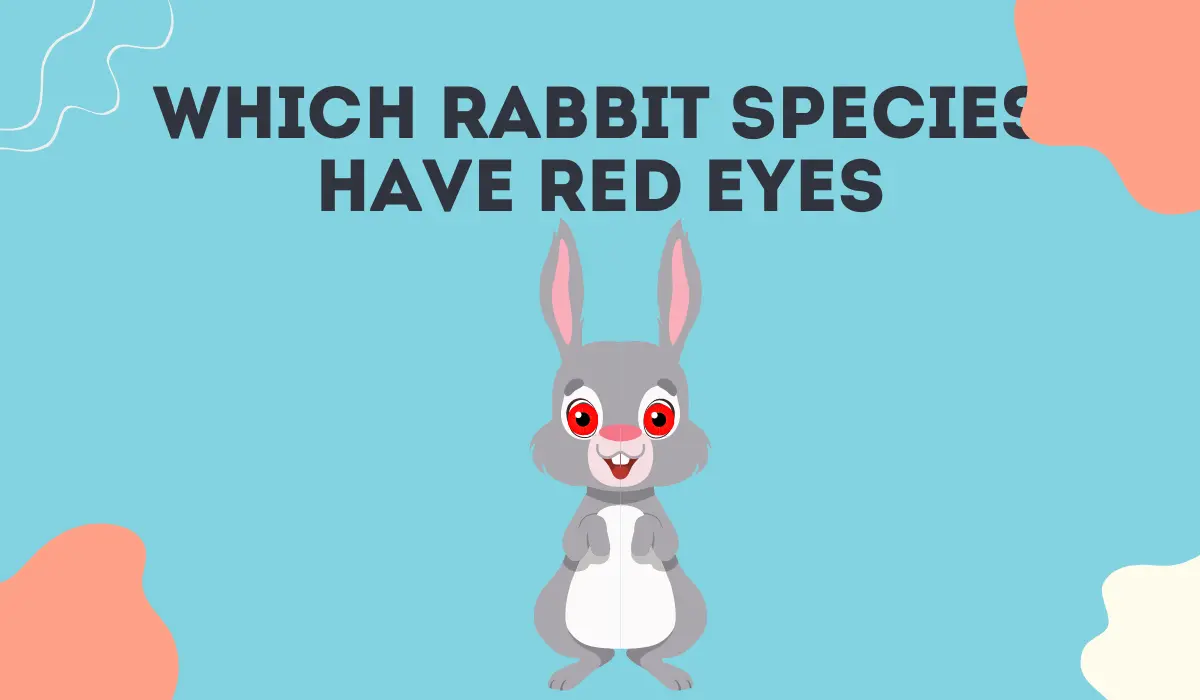Rabbit eye color can vary greatly depending on the breed and genetics. While many rabbits have brown or blue eyes, there are some breeds that have red eyes. The red color in rabbit eyes is caused by a lack of pigmentation, which allows the blood vessels in the eye to be visible.
There are several breeds of rabbits that can have red eyes. The most common cause is albinism, which is a genetic condition that results in a complete lack of pigmentation. Some breeds that are commonly associated with albinism and red eyes include the Himalayan, Florida White, and Californian. However, not all rabbits with red eyes are albino. Other breeds, such as the New Zealand White, can also have red eyes due to genetics.
While red-eyed rabbits may be striking in appearance, they can be more sensitive to light than rabbits with darker eyes. It’s important to provide these rabbits with a shaded area to rest and avoid prolonged exposure to bright sunlight. Additionally, red-eyed rabbits may be more prone to eye infections and other eye-related health issues, so it’s important to keep their eyes clean and monitor them for any signs of discomfort or illness.
Rabbit Species with Red Eyes
While most rabbits have brown or black eyes, there are some species that have red eyes. These red eyes are the result of a lack of pigmentation in the iris, which allows the blood vessels in the back of the eye to show through.
Albinism
One of the most well-known causes of red eyes in rabbits is albinism. Albino rabbits lack melanin, the pigment that gives color to hair, skin, and eyes. This lack of pigment results in a white coat, pink skin, and red eyes. Albino rabbits are sensitive to sunlight and should be kept in a dimly lit environment.
Ruby-eyed White
Ruby-eyed white rabbits are not true albinos, but they do lack pigmentation in their eyes. These rabbits have a white coat and bright red eyes. They are often bred for their unique appearance, but they can be sensitive to sunlight and should be kept in a dimly lit environment.
Red-Eyed Dilute
Red-eyed dilute rabbits have a dilute gene that affects their coat color and eye color. These rabbits have a pale coat and bright red eyes. They are not as sensitive to sunlight as albino or ruby-eyed white rabbits.
Himalayan
Himalayan rabbits are another species that can have red eyes. These rabbits have a white coat and dark points on their nose, ears, tail, and feet. The color of their eyes can vary, but they can have red eyes. Himalayan rabbits are not as sensitive to sunlight as albino or ruby-eyed white rabbits.
Overall, there are several rabbit species that can have red eyes. While some of these rabbits are bred for their unique appearance, it is important to remember that they can be sensitive to sunlight and should be kept in a dimly lit environment to protect their eyes.
Genetics of Red Eyes in Rabbits
Pigmentation and Eye Color
Red eyes in rabbits are caused by a lack of pigmentation in the iris of the eye. The iris is responsible for controlling the amount of light that enters the eye, and in rabbits with red eyes, the iris lacks the melanin pigment that gives it its color. As a result, the blood vessels in the eye are visible, giving the eye a red appearance.
Inheritance of Red Eyes
Red eyes in rabbits are inherited in a recessive manner. This means that both parents must carry the recessive gene for red eyes in order for their offspring to have red eyes. If only one parent carries the gene, the offspring will not have red eyes, but will instead be carriers of the gene. There are three recognized breeds of rabbits that will always have red eyes: the Himalayan, Florida White, and Californian.
These breeds are considered true albinos, meaning they lack all pigmentation throughout their body. Other breeds may also carry the gene for red eyes, but it may not be as noticeable due to the presence of other pigments in the iris. In order to determine the genetics of a rabbit’s eye color, breeders must selectively breed rabbits to eliminate possible genetic codes.
For example, a rabbit that appears white with red eyes may actually carry the gene for black fur, but the presence of the red eyes masks the black coloration. By selectively breeding rabbits with known genetic codes, breeders can determine the genetic makeup of their rabbits and selectively breed for desired traits.
Red eyes in rabbits are a result of genetic mutations that affect melanin production in the iris of the eye. While some breeds are more likely to exhibit red eyes due to their genetics, any breed of rabbit may carry the gene for red eyes.
Health Concerns for Rabbits with Red Eyes
Sunburn and Eye Damage
Rabbits with red eyes are more susceptible to sunburn and eye damage. This is because the red coloration in their eyes is caused by a lack of pigmentation, which means that their eyes are more sensitive to sunlight. Sunburn and eye damage can cause pain, swelling, and redness in the eyes, and can even lead to blindness if left untreated.
To prevent sunburn and eye damage, it is important to provide rabbits with red eyes with plenty of shade and protection from direct sunlight. This can be achieved by providing them with a covered area to rest in, or by using a sunblock specifically designed for rabbits.
Increased Risk of Blindness
Rabbits with red eyes are also at an increased risk of blindness. This is because the lack of pigmentation in their eyes makes them more susceptible to damage from UV rays and other environmental factors. Blindness can have a significant impact on a rabbit’s quality of life, making it difficult for them to navigate their environment and find food and water.
To reduce the risk of blindness in rabbits with red eyes, it is important to provide them with a safe and secure environment. This can include providing them with a spacious enclosure, free from sharp objects and other hazards, and ensuring that their food and water are easily accessible.
Increased Risk of Eye Infections
Rabbits with red eyes are also at an increased risk of eye infections. This is because the lack of pigmentation in their eyes makes them more susceptible to bacterial and viral infections. Eye infections can cause pain, swelling, and redness in the eyes, and can even lead to blindness if left untreated.
To reduce the risk of eye infections in rabbits with red eyes, it is important to maintain good hygiene practices. This can include regularly cleaning their enclosure, providing them with fresh food and water, and seeking veterinary care at the first sign of an infection.
FAQ
What is a white rabbit with red eyes called?
A white rabbit with red eyes is commonly referred to as an albino rabbit. Albinism is a genetic condition that affects the pigmentation of an animal’s fur, skin, and eyes, resulting in a lack of coloration. In rabbits, albinism is characterized by pure white fur and pink skin, as well as red or pink eyes due to the absence of pigmentation in the iris.
What breeds of rabbits have pink eyes?
Rabbits with pink eyes have eyes that appear red or pink in color due to a lack of pigmentation in the iris. Some of the breeds that can have albino individuals with pink eyes include the New Zealand White, Californian, Himalayan, and American Sable.
Can grey rabbits have red eyes?
No, grey rabbits cannot have red eyes. Red eyes in rabbits are caused by a lack of pigmentation in the iris, which results in the reflection of light from the blood vessels in the retina, giving the eyes a pink or red appearance.
Can rabbits get cherry eye?
Yes, rabbits can get a condition called cherry eye, which is also known as protrusion of the nictitating membrane gland. The nictitating membrane is a third eyelid located in the inner corner of the eye that helps protect and lubricate the eye. In rabbits with cherry eye, the gland within the nictitating membrane becomes inflamed and protrudes, creating a red or pink bulge in the corner of the eye.



